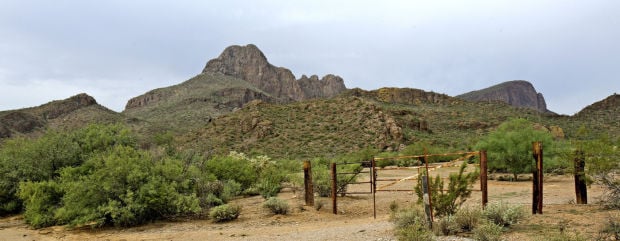For the third time since 2014, Marana's planning commission has voted to recommend approval for a controversial plan to turn a historic dude ranch into a 178-home subdivision.
But this time, the advisory board's Wednesday night vote — which is only a recommendation to the Town Council — was not unanimous.
Eighteen members of the public addressed the commission about the plan to rezone the Lazy K Bar Guest Ranch, but not one voiced support for it.
Commissioner Marcia Jakab said that changed her vote to a "nay."
"I've sat in this position for almost 10 years," she said before the roll-call vote. "And even when we had meetings that were approaching midnight about the landfill, there was always somebody that came forward that was supporting it. And there was absolutely no support in this audience tonight."
The proposal would rezone the Lazy K ranch to allow for a subdivision with four times the density currently allowed under "resort and recreation" zoning, which permits about 42 homes — one per 3.3 acres — or a 600-unit hotel. The new zoning would allow for about 1.3 homes per acre.
In May or June, the development and rezoning proposal will go before the Town Council, which has already rejected the proposal twice.
But for both of those earlier votes, the rezoning plan needed support from a supermajority of council members — six of seven members — in order to pass. That's because under state statute, a supermajority is required for zoning changes that are opposed by 20 percent of adjacent property owners.
This time around, the property owners and design firm have found a way to avoid triggering that requirement. The statute requiring a supermajority doesn't apply if the opposition comes from neighboring property owners who are more than 150 feet away from the land being rezoned. So this year, developers added a 150-foot strip of land around the perimeter of the Lazy K property that won't be rezoned. Now the proposal can pass with a simple majority, or four "yea" votes. It also means only 103 acres of the 138-acre property will be rezoned.
During the commission meeting, one Marana resident who spoke out said the developer's move was "devious."
"To me it seems like they’re just doing this to try to get this approved quicker," said Joyce Obiol, who lives on Scenic Drive near Lazy K.
Linda Morales of The Planning Center in Tucson — the firm that led the development of the Lazy K rezoning plan on behalf of the property owners — defended the decision to add the buffer.
"The developer was willing to give up 35 acres of the site as natural open space to buffer the property and to take it out of the protest area," Morales told the commission. "That 150-foot (condition) was put in by state law because it was deemed to be the area most affected" by a zoning change.
The latest version of the Lazy K proposal includes at least 60 percent open space. Morales said it also features a hiking trail and preserves the original stone homestead and the existing outdoor fireplace, patio and event lawn as a common area. The homes could cost up to $600,000.
Before casting her "yea" vote, commissioner Terry Fehrmann said, "In review of this plan, I will tell you it's greatly improved" from two years ago. She noted the developers have made many compromises, including adding more open space and keeping all homes single-story.
Lazy K property owners Jim Shiner and Peter Evans have been trying since 2014 to get a plan approved to finally develop their land. The site is just a half-mile north of Saguaro National Park West, and is west of North Silverbell Road and south of West Twin Peaks Road.
Opponents — including Saguaro National Park — have objected to the rezoning. They say it conflicts with Marana’s own general plan, which designates the project site as rural density residential, as well as the town’s draft habitat conservation plan. Many are also concerned about increased traffic in the area.
At the behest of the Coalition for Sonoran Desert Protection, the design firm reconfigured the layout of the site plan to minimize the homes' impact on a crucial wildlife corridor between the Tucson Mountains and the Tortolitas to the northeast. But coalition president Carolyn Campbell said last week she still couldn't commit to supporting the latest version of the plan, which now encroaches on natural washes.
For more details, see the Star's Friday paper.





